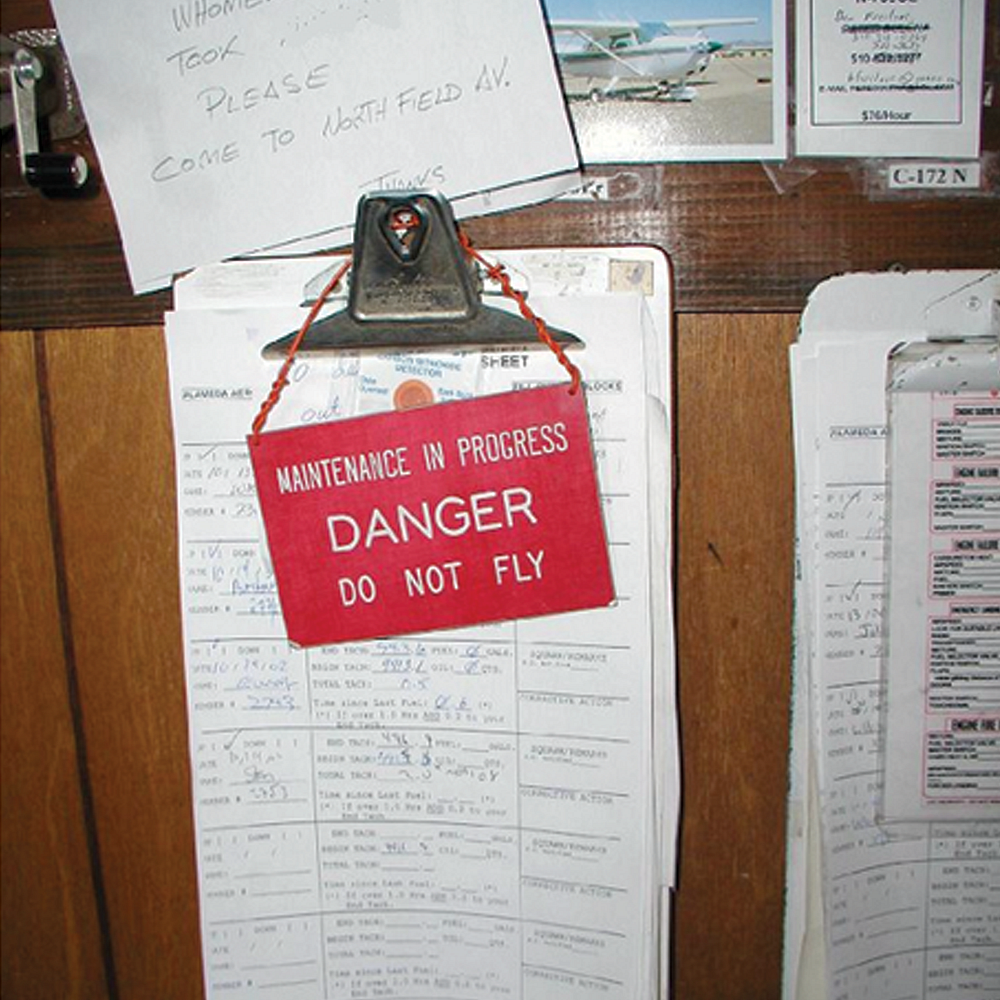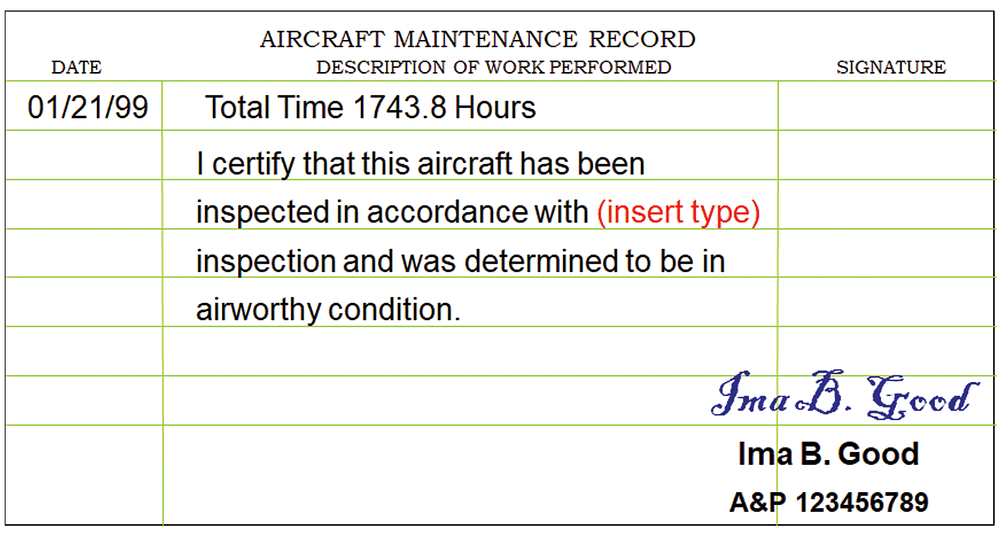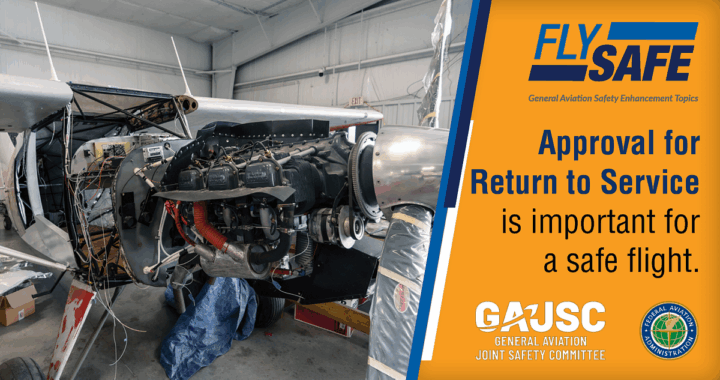Decisive Documentation
An “Approval for Return to Service” is a written statement or logbook entry, including the date, a description of the work performed, and the signature and certificate number of the person approving the return to service. The person signing the approval must be authorized to do so, according to 14 CFR part 43, and be a qualified mechanic, repair station employee, or manufacturer. The approval applies to the aircraft, airframe, engine, propellers, appliances, or component parts, as well as after maintenance, preventive maintenance, rebuilding, or alteration.
Almost any maintenance activity in progress will render an aircraft unairworthy. Even the removal of the big red sign from the yoke or a status update of “OK to dispatch” does not mean the aircraft is safe and ready to fly. Before a pilot can accept an aircraft for flight operations, they must know that maintenance has been performed to accepted standards, and the aircraft is once again airworthy.

Per 14 CFR section 43.9, any person who performs maintenance, repairs, or alterations on an aircraft shall make an entry in the maintenance record with the following information:
- A description of the work performed,
- The date the work was completed,
- The name of the person who performed the work, and
- The signature, certificate number, and kind of certificate held by the person approving the work.

After an inspection, your maintenance record entry should contain:
- A certification statement such as: “I certify that this aircraft has been inspected in accordance with XYZ inspection and was determined to be in airworthy condition,’’
- The date of the inspection,
- The aircraft total time in service, and
- The signature, certificate number, and kind of certificate held by the person approving return to service.

Inspection = Protection
A thorough preflight should be accomplished on an aircraft that has been returned to service. Start with the aircraft documentation, ensuring the maintenance work has been documented in the appropriate aircraft logbook, and double check that that aircraft has been returned to service. You must have the signature and certificate number of the person approving for return to service — these represent your “Approval for Return to Service.” Note that if the aircraft was test flown, there may be a discrepancy between the logbook time and what you see on the panel. Be sure to take your time looking the aircraft over, and:
🛩️ Use a checklist to make sure you don’t miss anything.
🛩️ Pay particular attention to the areas that were worked on, including any removed panels and any systems/components that may have been disconnected to gain access to parts that were serviced.
🛩️ Pay special attention for things like oil leaks and loose fasteners.
🛩️ Stay in the pattern within gliding distance of your runway for your first flight.
Responsibility Reminder
Remember, while the “Approval for Return to Service” is authorized by the qualified mechanic, it is the aircraft owner/operator’s responsibility to ensure that maintenance personnel make the appropriate entries in the aircraft logbook. Proper logbook entries that detail the work completed not only keep you up to speed on the condition of your aircraft, but they also serve as an important factor in maintaining the airworthiness and long-term value of your airplane.
As a best practice, always check the logbooks after an aircraft is returned from maintenance. And before you take or fly that aircraft, always look for the signed “Approval for Return to Service” entry. That way, you’ll know that your aircraft is ready to fly.
Additional Resources
- Advisory Circular 43–9C, Maintenance Records
- NTSB Safety Alert 041 — Advanced Preflight After Maintenance (PDF download)
- #FlySafe GA Safety Enhancement Topic — Advanced Preflight After Maintenance
- “Preflight After Maintenance,” FAA Safety Briefing, Mar/Apr 2022
- Fact Sheet on Approval for Return to Service (PDF download)

